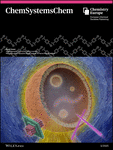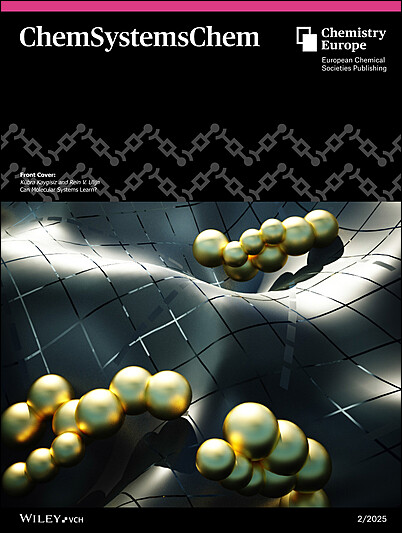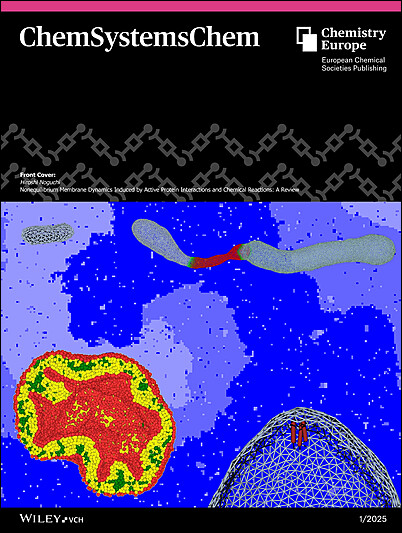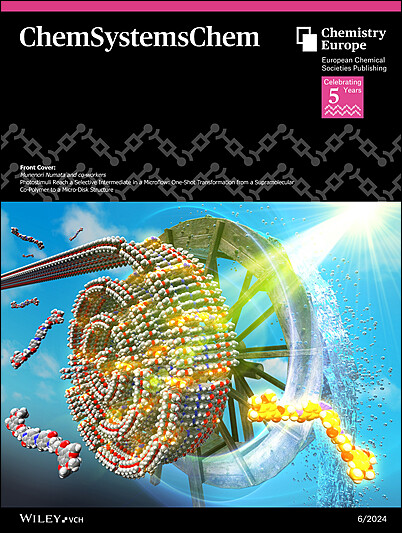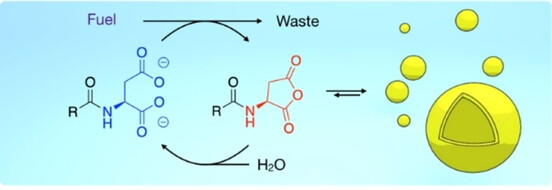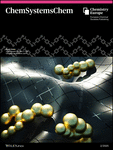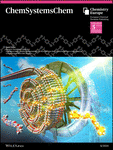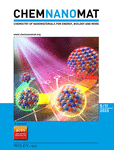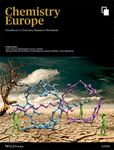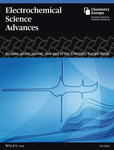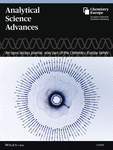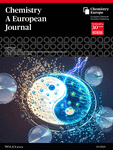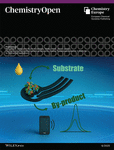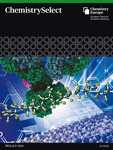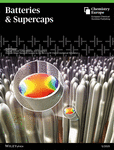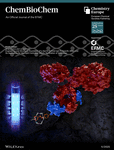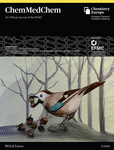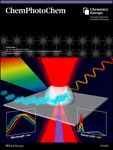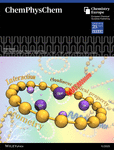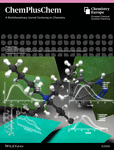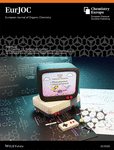Journal list menu
ChemSystemsChem is an interdisciplinary systems chemistry journal publishing exceptional research in all areas of chemical systems with emergent properties, from synthetic biology and biophysics, to chemical reaction networks, smart materials, origins-of-life chemistry, methods and theories. We inspire and innovate in the scientific community, helping to bring systems chemistry from across the globe to the forefront and center.
Journal Metrics
- 5.9CiteScore
- 3.1Journal Impact Factor
- 55%Acceptance rate
- 25 days Submission to first decision
On the Cover
Articles
Front Cover: Micrometer‐Sized Liposome‐Based Systems: A Hierarchical Breakdown (ChemSystemsChem 3/2025)
- 19 May 2025
Graphical Abstract
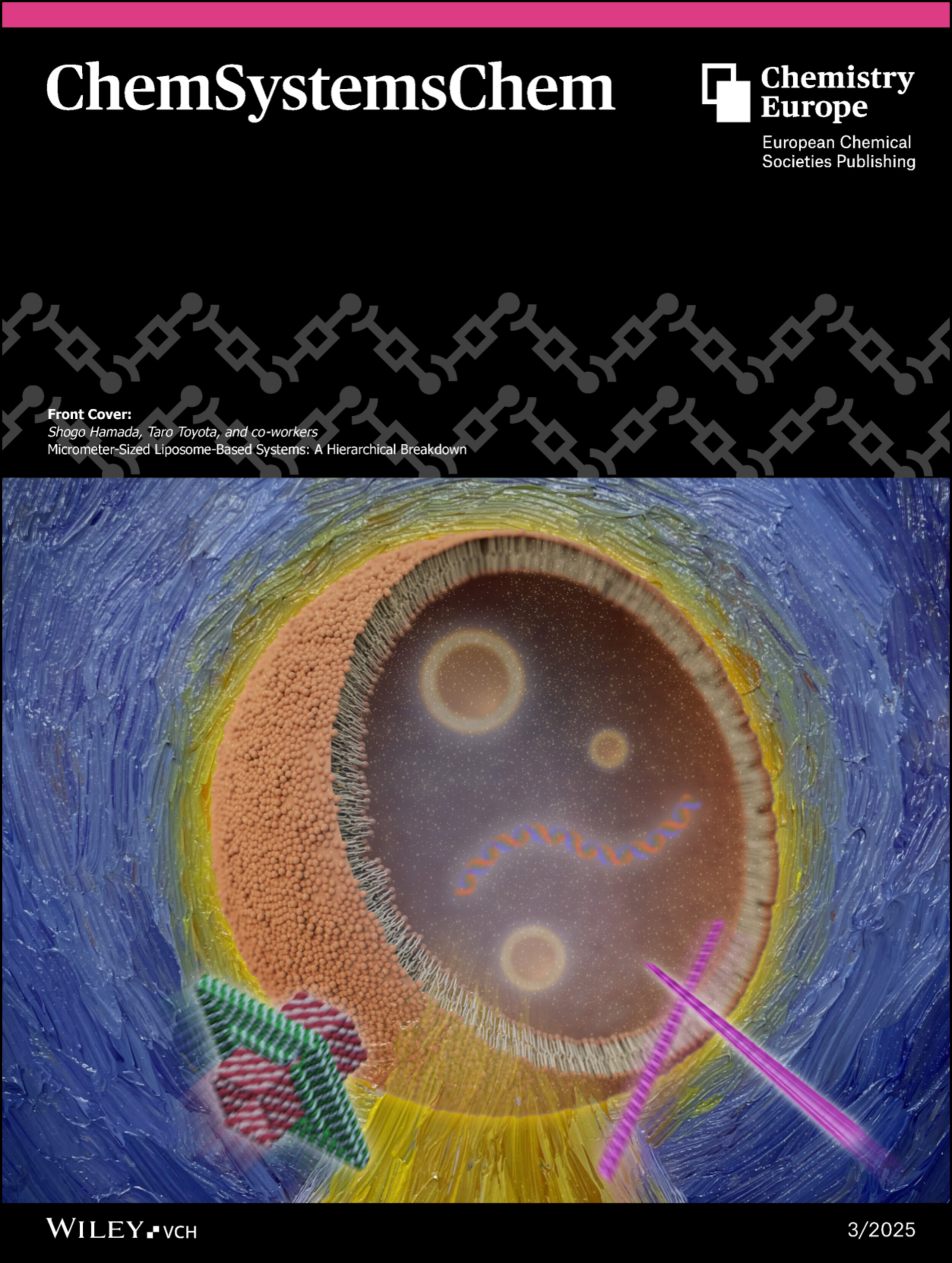
Micrometer-sized liposomes (MSLs) are gaining attention as platforms for applications ranging from biophysical cell models to molecular robots. However, comprehensive cross-disciplinary reviews remain scarce. The review by Shogo Hamada, Taro Toyota, and co-workers addresses this gap by systematically covering MSL design, including applications, functionalization, and formation, serving as a guide for researchers and newcomers seeking to explore their broad potential across various disciplines.
Response of Giant Unilamellar Vesicles (GUVs) in Acoustic Field
- 8 May 2025
Graphical Abstract
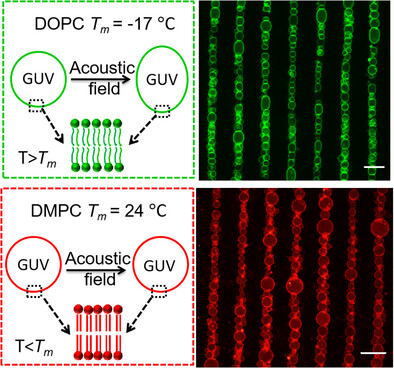
The response behavior of GUVs under acoustic radiation force is investigated. The temperature-mediated deformation of GUVs and GUVs deformation with binary lipid composition under acoustic field were studied in detail. We believe that the deformation behavior of GUVs under acoustic radiation force will provide a new platform for membrane mechanical properties research.
Computational Evaluation of the Binding of Activated Ribonucleotides in Nonenzymatic RNA Template Copying
- 28 April 2025
Graphical Abstract
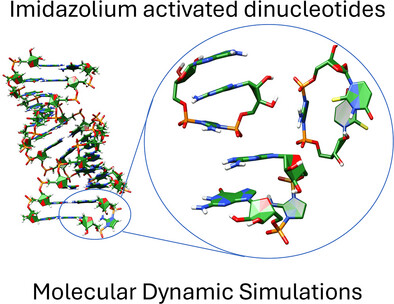
Molecular dynamics simulations allowed us to understand the binding modes of different imidazolium-activated dinucleotide intermediates in nonenzymatic RNA template copying process. We demonstrate that the rate and fidelity of the reaction depends on the conformational space of the activated dinucleotide and its preference to maintain a stacked A-RNA-like structure, and not solely on the number of hydrogen bonds in the Watson–Crick interaction.
Autonomous Artificial Molecular Motors and Pumps
- 28 April 2025
Graphical Abstract
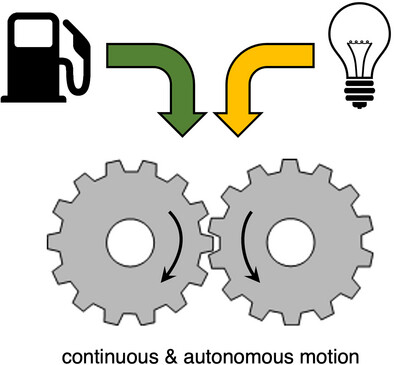
Autonomous energy consumption is the only way to introduce molecular motors into more sophisticated, larger systems, capable of life-like behavior. We reviewed a selection of the most recent advances in the field molecular motors focusing on those capable of performing continuous and autonomous motion under constant experimental conditions, that is, stable light intensity or concentration of chemical fuel.
Simple Hydroxybenzene Molecules as Thermally Stable Catalysts
- 28 April 2025
Graphical Abstract
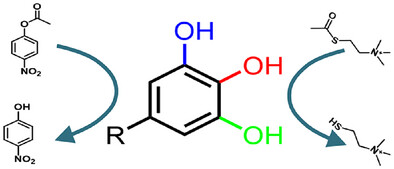
Hydroxybenzene molecules, including tannic acid, catalyze the hydrolysis of p-nitrophenylacetate (pNPA) to p-nitrophenol and thioacetylcholine (tAChI) to thiocholine. The catalytic performance is governed by the number and arrangement of hydroxyl groups, as well as polymer formation during incubation. Higher temperatures further boost the activity. These insights reveal how molecular structure, polymerization, and reaction conditions synergistically control hydroxybenzene-mediated hydrolysis.
Transient Changes in Conductivity of a Water Solution by Means of an Activated Carboxylic Acid (ACA)
- 28 April 2025
Graphical Abstract
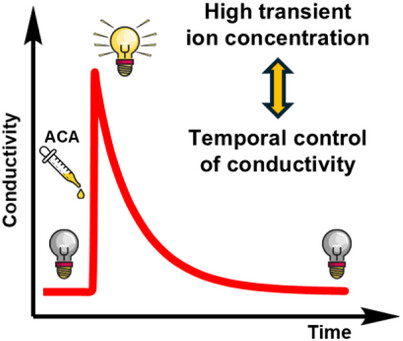
Nitroacetic acid, the most active activated carboxylic acid (ACA) employed so far, is used to transiently increase the conductivity of a water solution. Its dissociation produces ions that act as charge carriers, increasing the conductivity of the system. The subsequent, spontaneous decarboxylation removes such ions from the solution lowering the conductivity to a base value. This conductivity cycle is used to control simple electric circuits.
Front Cover: Can Molecular Systems Learn? (ChemSystemsChem 2/2025)
- 14 March 2025
Graphical Abstract
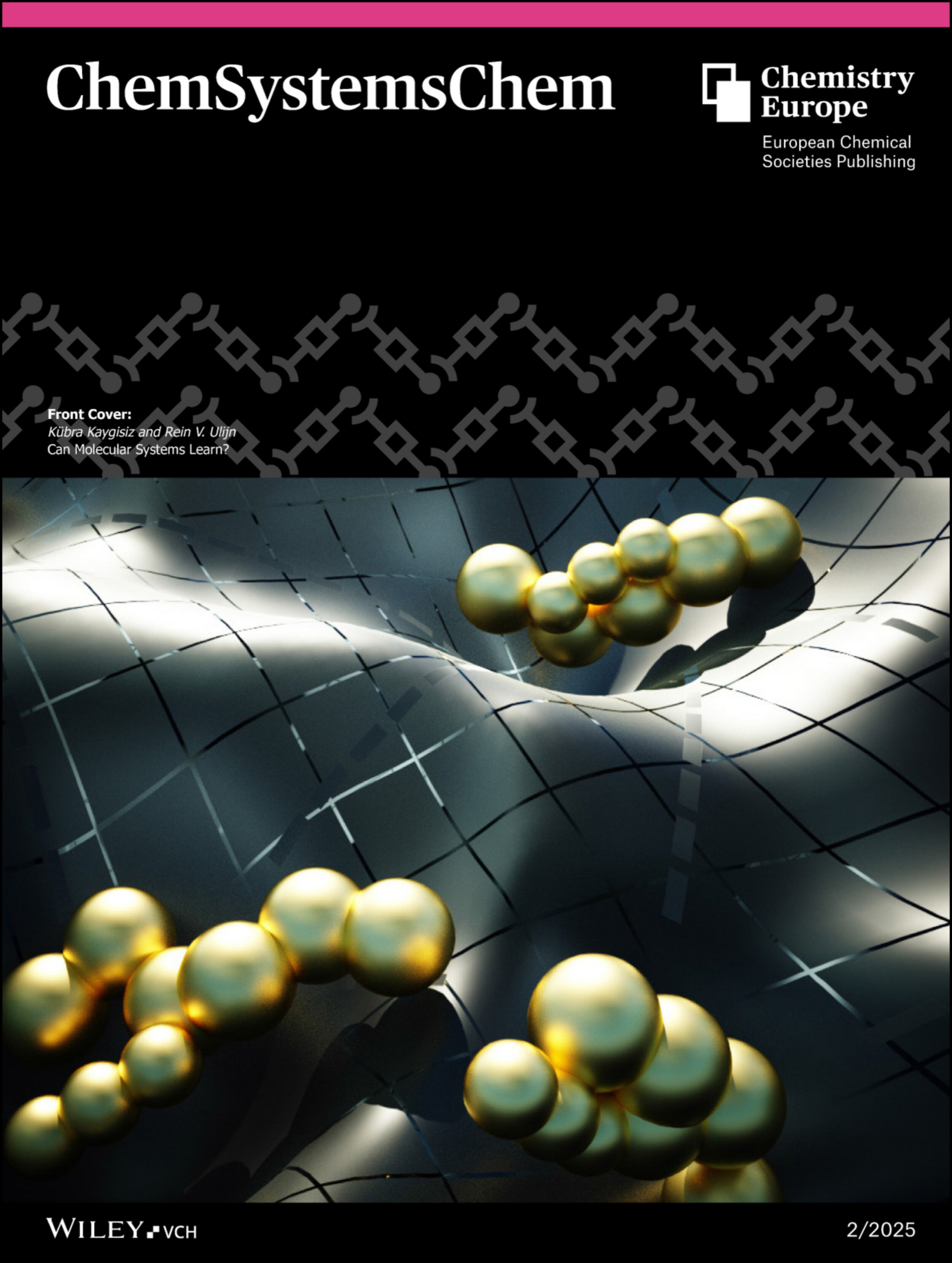
Learning and memory, once associated only with intelligent life forms, are now increasingly recognized in both physical and virtual systems, such as simple organisms, machines, and even designed chemical systems. The Perspective by Kübra Kaygisiz and Rein V. Ulijn explores how molecular components can be engineered to create supramolecular systems capable of learning, with potential applications in materials science and next-generation computing.
Organic Reactivity Matters for the Emergence of Life: Kinetic Barriers and Molecular Diversity Are Suggested as Crucial Factors by Emerging Autonomous System Models
- 13 March 2025
Graphical Abstract
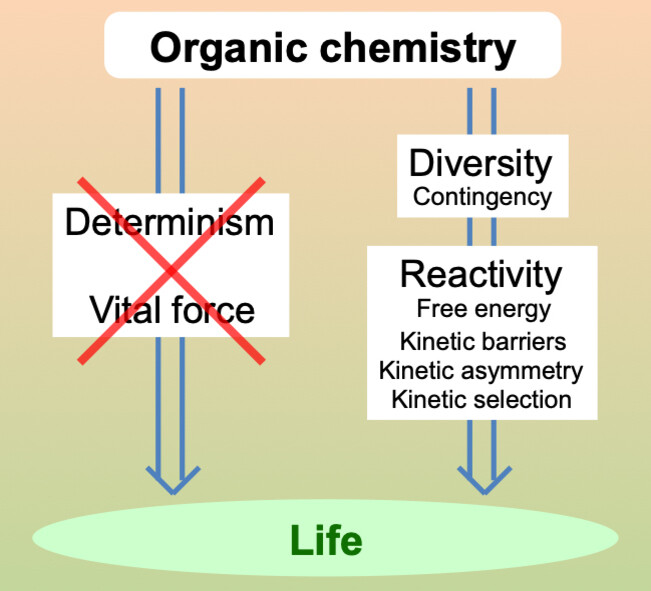
Self-organisation may result from organic systems fed with free energy provided that reactivity becomes a determining factor. The propensity of carbon to form covalent bonds can give rise to kinetically stable thermodynamically activated compounds possibly undergoing non-linear kinetic processes. Selection based on increased dynamic kinetic stability should become a driving force for change among the diversity of these systems.
Chemical Memory in a Three‐Reaction Dynamic System
- 10 March 2025
Graphical Abstract

A minimalistic bilayer dynamic library was designed using thioester, disulfide, dithioacetal, and thiol exchanges. The system's final steady-state composition reveals how residue-less, transient environmental changes – occurring the previous day – alter the molecular network wiring. This process encodes and retains detailed information about both the type of environmental change and its timing, highlighting the concept of chemical memory in dynamic systems
The following is a list of the most cited articles based on citations published in the last three years, according to CrossRef.
When Did Life Likely Emerge on Earth in an RNA‐First Process?
- 24 September 2019
Graphical Abstract

Timing prebiotic RNA formation: Models for Earth′s impact history explain the late delivery of platinum, gold, and other siderophiles via a ∼1023 kg impactor (Moneta) circa 4.48 billion years ago. The iron core from this impactor would have reduced the atmosphere above a relatively oxidized mantle, opening a window of opportunity for RNA precursor synthesis. Surprisingly, this suggests that RNA formation was most probable ∼4.36±0.1 billion years ago.
Chemically Fueled Block Copolymer Self-Assembly into Transient Nanoreactors**
- 15 March 2021
Graphical Abstract

Reaction center: The self-assembly of block-copolymer micelles is coupled to a fuel-driven chemical reaction cycle. In their finite lifetime, the micelles are able to locally increase the concentration of reagents for a Diels-Alder reaction and drastically accelerate its rate. Thus, the kinetically controlled block copolymer micelles function as temporary nanoreactor.
Multivesicular Vesicles: Preparation and Applications
- 19 December 2020
Graphical Abstract
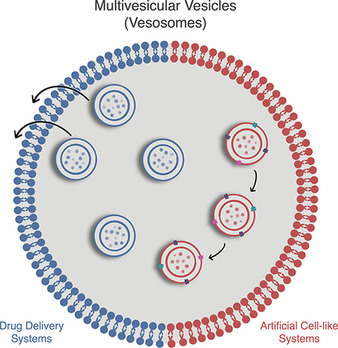
Multivesicular vesicles (MVVs) are non-concentrically arranged vesicles-in-vesicle systems that can be prepared from bilayer-forming amphiphiles. Although spontaneous formation of MVVs is possible, these hierarchical structures are usually obtained by guided assembly in a variety of different manners. This Review explores the different methods that lead to the generation of MVVs, assessing their advantages and limitations, and discusses current applications for drug delivery and as artificial cell-like systems.
Redox Chemical‐Fueled Dissipative Self‐Assembly of Active Materials
- 27 November 2019
Graphical Abstract

Grow and learn: A new active material system was achieved by using a mild redox reaction network to fuel the dissipative self-assembly of a disulfide-based hydrogelator. The mild redox reactions simultaneously cause self-assembled fibrils to grow and shrink, leading to transient, out-of-equilibrium dynamic behavior.
Acceleration of an Enzymatic Reaction in Liquid Phase Separated Compartments Based on Intrinsically Disordered Protein Domains
- 21 February 2020
Graphical Abstract

Conscious coupling of structure and function: A strategy based on biologically inspired low complexity protein domains to couple the formation of biomolecular liquid compartments with reactions occuring within them is described. We develop methods to characterize concentration, polarity, liquid-like properties and reaction rates within these compartments, showing that the local increase in enzyme concentration accelerates the corresponding enzymatic rate up to 5-fold. This flexible strategy enables the generation of biomolecular micro-reactors with enhanced reactivity and with potential applications in heterogeneous biocatalysis.
Autocatalysis: Kinetics, Mechanisms and Design
- 26 August 2020
Graphical Abstract
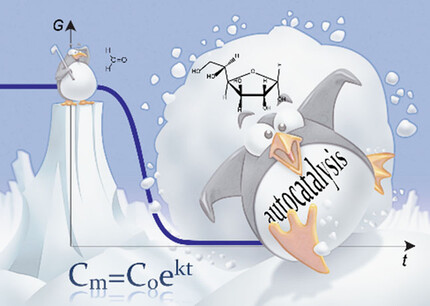
Across the board: Autocatalysis has broad importance ranging from photolithography to the origins of life. This Review covers all main aspects of autocatalysis. It introduces the kinetics of autocatalysis, describes mechanisms for the major classes of autocatalytic reactions, highlights the concept of autocatalytic reaction networks, proposes approaches for designing new autocatalytic systems, and discusses challenges and perspectives in the field of autocatalysis.
High‐Throughput Synthesis and Screening of Functional Coacervates Using Microfluidics
- 27 May 2020
Graphical Abstract

Open reaction centers: Droplet-based microfluidics allows the high-throughput synthesis and screening of populations of micron-sized coacervates with an unprecedented accuracy. The study of partition coefficients and sequestered reaction rates in these minimal synthetic organelles provides insights in the role of sub-compartmentalisation in regulating out-of-equilibrium behaviours in biological systems.
Simulating Diffusion Properties of Solid-State Electrolytes via a Neural Network Potential: Performance and Training Scheme†
- 5 December 2019
Graphical Abstract

That's electric: We develop a scheme to train artificial neural networks (ANN) for molecular dynamics (MD), avoiding overfitting and reducing to a minimum the number of configurations used. An initial approximate model is trained on a small set of configurations and used to start the training loop. The training set is then iteratively augmented till the desired property becomes stationary. We test our scheme on solid-state electrolyte materials for battery applications, focusing on the evaluation of the diffusion coefficient.
Chemically Fuelled Self‐Regulating Gel‐to‐Gel Transition
- 4 November 2019
Graphical Abstract
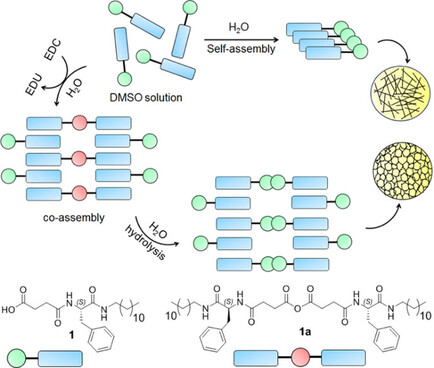
Make and break: A chemically fuelled self-regulating dynamic system is designed that undergoes a pre-programmed gel-to-gel transition through successive covalent bond formation and rupture. We show that the final properties of the gel differ significantly from those of the gel obtained directly from the gelator in the absence of the fuel.
Multivesicular Vesicles: Preparation and Applications
- ChemSystemsChem
- 19 December 2020
Graphical Abstract

Multivesicular vesicles (MVVs) are non-concentrically arranged vesicles-in-vesicle systems that can be prepared from bilayer-forming amphiphiles. Although spontaneous formation of MVVs is possible, these hierarchical structures are usually obtained by guided assembly in a variety of different manners. This Review explores the different methods that lead to the generation of MVVs, assessing their advantages and limitations, and discusses current applications for drug delivery and as artificial cell-like systems.
Crown Ether Active Template Synthesis of Rotaxanes**
- ChemSystemsChem
- 7 December 2023
Graphical Abstract
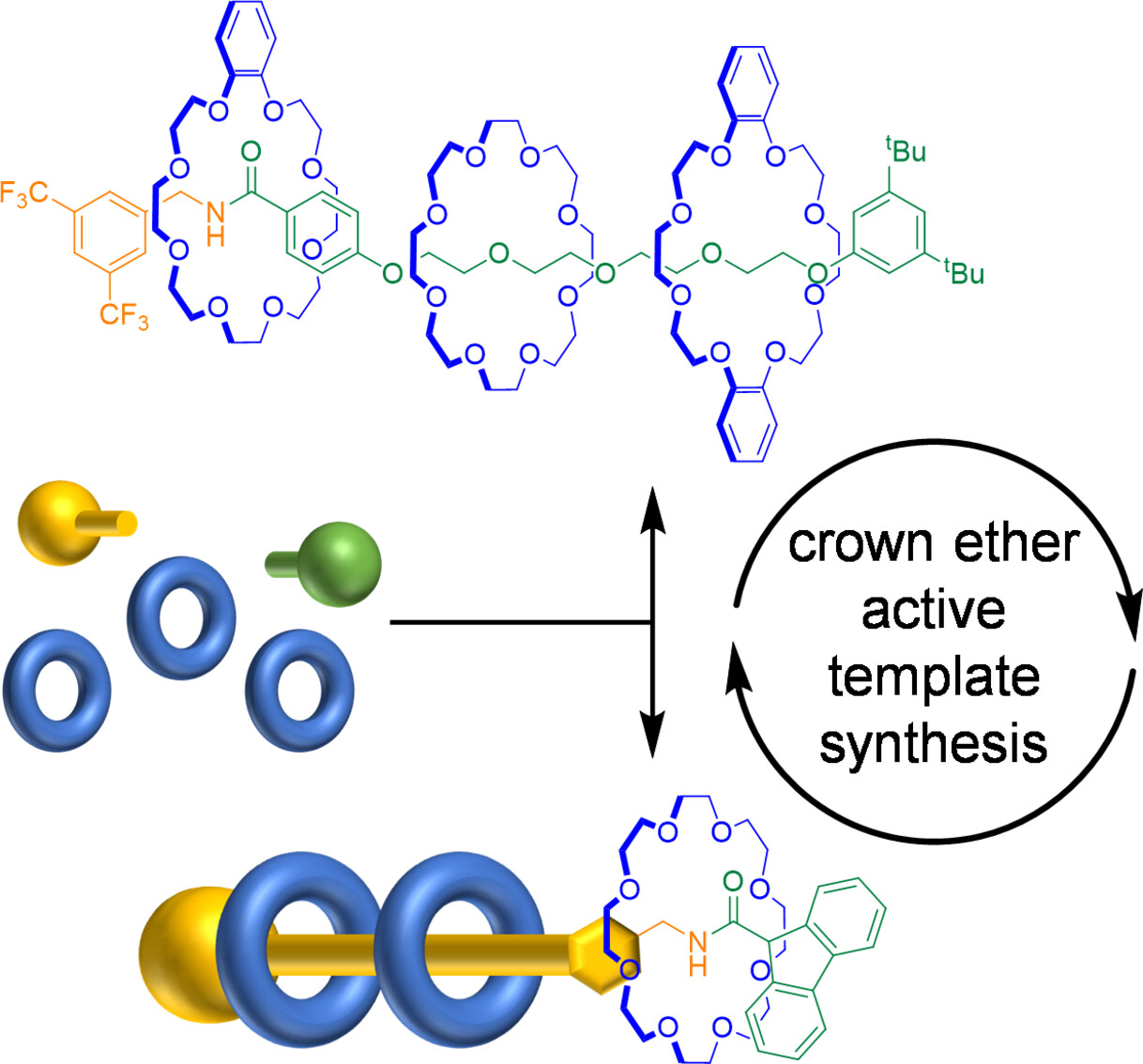
Crown ether active template synthesis (CEATS) is a recently developed method for accessing rotaxanes using kinetic control. This makes it possible to produce thermodynamically disfavored rotaxanes by coupling their assembly with simple chemical reactions. CEATS has provided access to rotaxanes containing a wide variety of functionality and can be used as a mechanism to drive molecular pumps.
Artificial Molecular Systems for Complex Functions Based on DNA Nanotechnology and Cell‐Sized Lipid Vesicles
- ChemSystemsChem
- 10 May 2024
Graphical Abstract
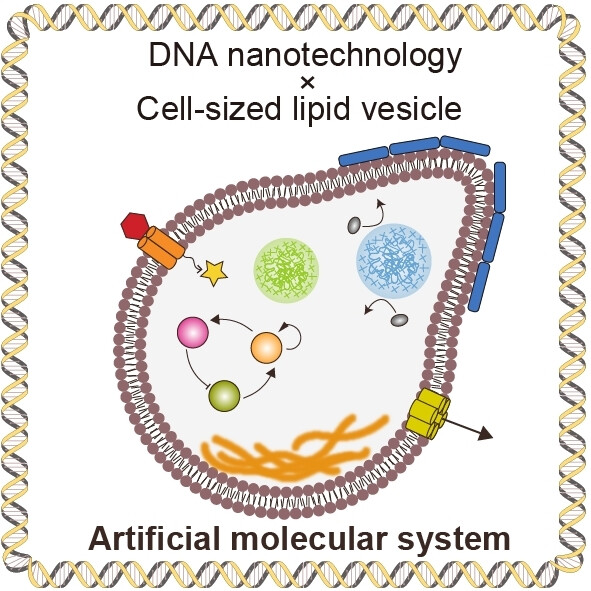
This review focused on a research approach for creating artificial molecular systems, comparable with natural cells, based on DNA nanotechnology. Cell-inspired functions in giant unilamellar vesicles (GUVs) were realized by utilizing sequence-designed DNAs for functional nanostructures and chemical reaction networks. This review described remarkable achievements that have been reported so far.
Biomolecular Condensates: From Bacterial Compartments to Incubator Spaces of Emergent Chemical Systems in Matter‐to‐Life Transitions
- ChemSystemsChem
- 17 April 2024
Graphical Abstract

This review examines discoveries of biomolecular condensates as compartments in bacteria. Insights from bacterial cell biology and systems chemistry reveal intricate connections between chemical reactions and the control of condensate phase separation. Additionally, condensate properties illuminate simple chemical strategies for creating unique chemical environments with potential roles in evolutionary selection.
Membrane Transport, Molecular Machines, and Maxwell's Demon
- ChemSystemsChem
- 9 February 2024
Graphical Abstract

The Maxwell's Demon thought experiment creates nonequilibrium gradients, and underpins the molecular ratchet mechanisms that drive artificial motors and pumps. Lipid bilayers form membranes that closely mirror the compartments of Maxwell's Demon. This Concept Article addresses how ratchet mechanisms might be translated from the field of small-molecule machines to create artificial transmembrane pumps.
Complex Coacervation and Compartmentalized Conversion of Prebiotically Relevant Metabolites**
- ChemSystemsChem
- 23 March 2022
Graphical Abstract
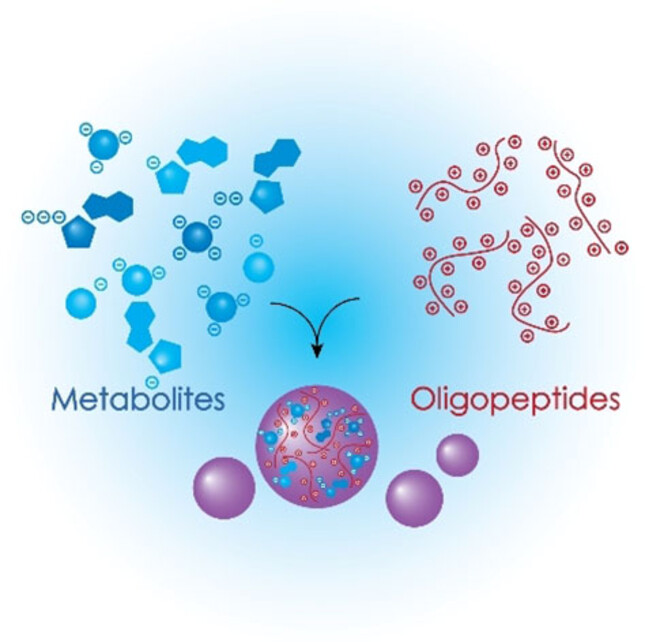
Metabolically active coacervates combine two important hallmarks of life: metabolism and compartmentalization. This work shows that a wide range of prebiotic metabolites can form complex coacervate protocells with oligoarginine. Prebiotically plausible conversions of the metabolites can give rise to active coacervate formation, are enhanced inside the coacervate microenvironment and can, in turn, affect the stability of the coacervate compartment.
Autocatalysis: Kinetics, Mechanisms and Design
- ChemSystemsChem
- 26 August 2020
Graphical Abstract

Across the board: Autocatalysis has broad importance ranging from photolithography to the origins of life. This Review covers all main aspects of autocatalysis. It introduces the kinetics of autocatalysis, describes mechanisms for the major classes of autocatalytic reactions, highlights the concept of autocatalytic reaction networks, proposes approaches for designing new autocatalytic systems, and discusses challenges and perspectives in the field of autocatalysis.
Phase‐Separated Droplets Can Direct the Kinetics of Chemical Reactions Including Polymerization, Self‐Replication and Oscillating Networks
- ChemSystemsChem
- 21 August 2024
Graphical Abstract

Using a numerical model, we study how phase-separated compartments can influence chemical reactions. We show how the volume ratio (R) and partition coefficient (Kp) affect reaction rates in bimolecular reactions, and how coacervates can alter polymerization, self-replication, and oscillating networks. These findings suggest coacervates can direct reaction outcomes, with implications for the origins of life and (synthetic) biology.
Empowering Chemical AI Through Systems Chemistry
- ChemSystemsChem
- 19 September 2024
Graphical Abstract
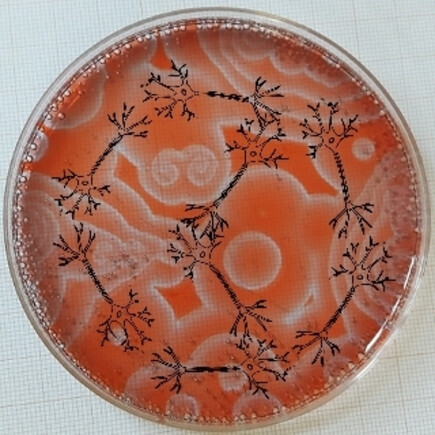
Chemical Artificial Intelligence (CAI) devises liquid chemical systems that mimic some performances of biological and human intelligence. The systems, which often are inspired by neuronal nets, can assist humans in making decisions. The next grand challenge is to devise autonomous chemical systems that can colonize the molecular world with remarkable technological applications. CAI also promises to elucidate the mysterious event of life‘s appearance on Earth.
Photoswitchable Surfactants–Are there Alternatives to Azobenzene‐Based Systems?
- ChemSystemsChem
- 29 July 2024
Graphical Abstract
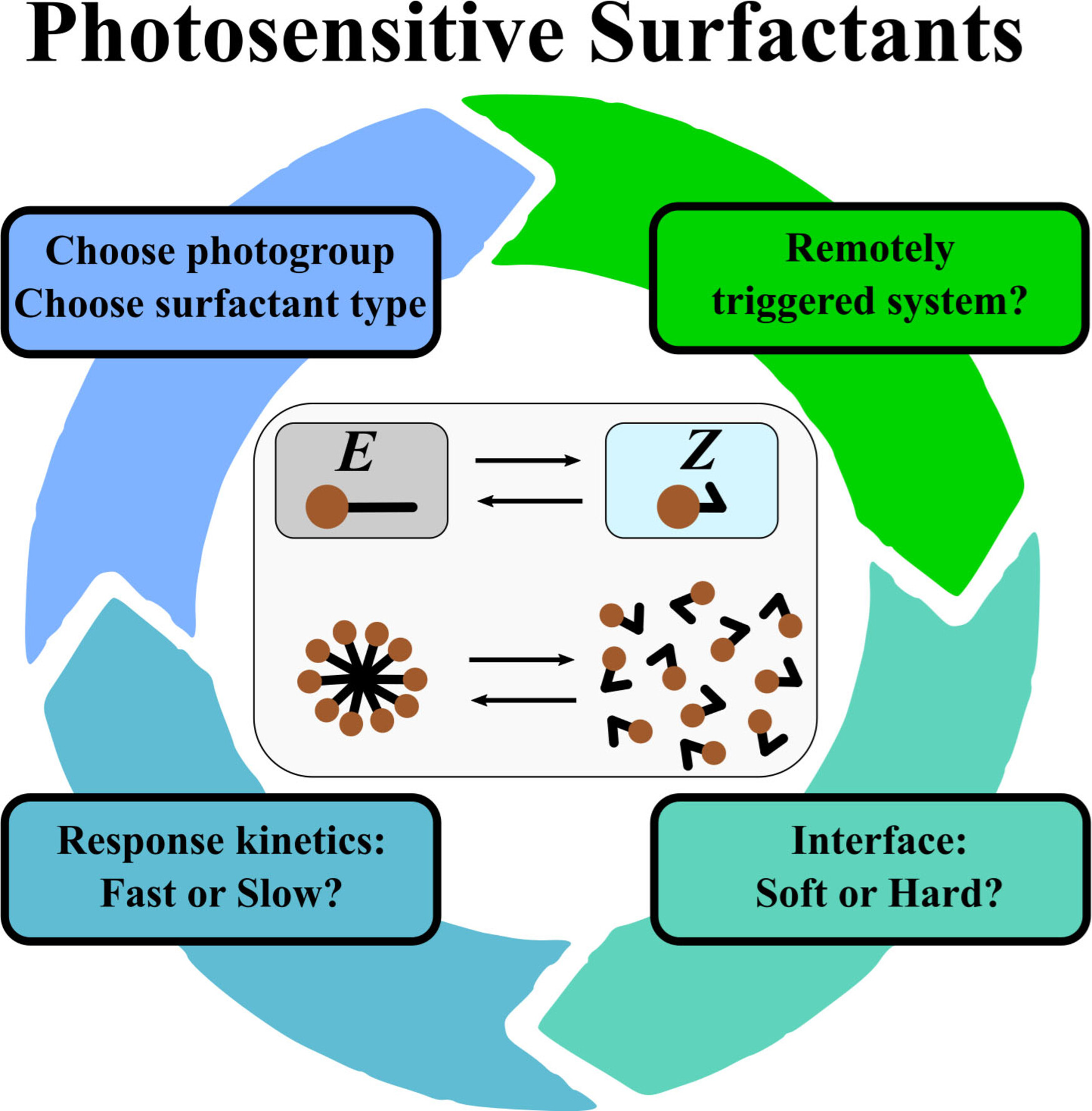
Photosensitive surfactants have gained increasing interest in colloidal science. So far, mostly azaobenzene surfactants have been investigated. In this perspective, we want to address the question, which characteristics ideal photosensitive surfactants should possess. With that, we want to give an outline, how photoswitchable surfactants may be designed, yielding novel, high-performance novel surface-active materials.
Recent issues
- Volume 7, Issue 3May 2025
- Volume 7, Issue 2March 2025
- Volume 7, Issue 1January 2025
- Volume 6, Issue 6November 2024




